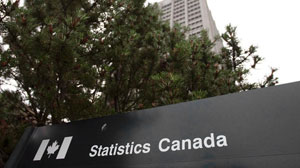12/8/2023
| SHARE
Posted in Canadian Economy and Housing Market by Vanguard Realty | Back to Main Blog Page

Canada’s banking regulator today announced no change to the amount of capital banks must keep on hand to cover potential future losses.
As part of its semi-annual review, the Office of the Superintendent of Financial Institutions (OSFI) left the Domestic Stability Buffer (DSB) at its current rate of 3.5%, which has been in effect since November 1.
Launched in 2018, the DSB serves as a “rainy day fund” that Canada’s big six banks are expected to keep on hand in addition to the minimum capital requirements known as the common equity tier 1 (CET1) ratio. The CET1 ratio remains at 11.5% of risk-weighted assets, although all of the country’s big banks have reported CET1 ratios in excess of 12%.
In making its decision, OSFI superintendent Peter Routledge said the country’s big banks “have each reached a level of reserve capital that is sufficient to absorb losses if current vulnerabilities materialize into actual losses.”
Vulnerabilities still present, but haven’t worsened
OSFI has raised the DSB by 100 basis points over the past year due to concerns about rising financial system vulnerabilities. As interest rates have risen sharply over that time, OSFI flagged concerns over highly indebted households that it said were “more vulnerable to economic shocks.”
At its last review in June, OSFI raised the DSB from a level of 3% to 3.5%.
He said that raising the DSB over the past 18 months was akin to “buying insurance at a very cheap price.”
“Now we have enough insurance, we believe,” for a plausible but unlikely severe downside scenario,” Routledge said.
Should any vulnerabilities materialize into actual losses, Routledge said OSFI would then lower the DSB and allow the banks to use those funds to offset their losses.
OSFI also sees positive signs
Despite the challenging economic environment, OSFI noted that there have also been some positive signs, including improvements to household debt-to-income ratios and an easing of inflation.
“As for what we see now…we don’t see vulnerabilities worsening,” Routledge said. “In fact, they haven’t worsened over the last six months. Therefore, we think our loss absorbency in the system is adequate.”

Source: Canadian Mortgage Trends
Big Six, Statistics Canada

